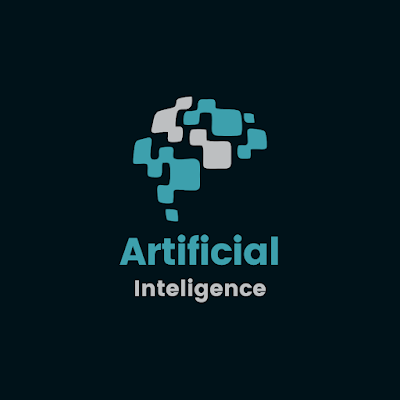Artificial inteligence
“Artificial intelligence is an idea that uses computer systems to perform tasks normally requiring human intelligence, such as visual perception, speech recognition and decision making. The term was coined by John McCarthy in 1955 in the Proceedings of the Dartmouth Conference on Artificial Intelligence. It first appeared in his book “Computing Machinery and Intelligence” but gained momentum in the 1960s with a series of publications by John McCarthy himself [1]
Today we have several types of machine-learning algorithms and artificial intelligent systems, including predictive analytics, simulation, robotics and deep learning. In the last few years, we have seen an explosion of interest and investment into developing these technologies for solving real world problems. Some areas have been explored more than others, however the most exciting applications have come from science and engineering related disciplines (e.g. healthcare, retail, manufacturing, autonomous driving) that were relatively less active in other sectors.
Most importantly though has been the quest for better intelligence. These can be divided into two categories the symbolic and pragmatic: machine learning and artificial intelligence. Although both technologies are very similar they have completely different uses. While Machine Learning is used to automate, optimize or predict tasks while Artificial Intelligence applies statistical analysis and AI techniques to make decisions without being explicitly programmed. For this discussion we will focus on artificial intelligence by using Deep learning and reinforcement learning.
We will see that these types of technology allow us to do what would be impossible or prohibitively complex to do manually such as creating artificial intelligence systems that recognize natural language, text, images, products, people, animals and even physical objects.
The rise of artificial intelligence (AI)
Artificial intelligence is now recognized as an alternative to machine learning for use by companies like IBM Watson and Elon Musk’s company OpenAI. This is in contrast to traditional machine learning where computers only learn through example and is therefore slow and unreliable.
Artificial intelligence goes further than this and becomes so much smarter than human being that it does not recognize its own limitations at all. This allows it to learn through experience and makes it capable of performing cognitive functions faster and more accurately than any person in history.
As humans, we cannot perceive reality as clearly as machines that we call artificial.
Furthermore, machines learn and evolve over time and need to be constantly updated for them to remain effective over time. Unlike humans who continuously learn and improve, machines only learn over time when they are confronted with a new situation and then based on some prior knowledge or experience make decisions.
Even if they were faced with a novel situation, they don’t know at when the next state is a good one or bad for them.
So, how do we create artificial intelligence? At best we can create a smart system that uses AI techniques to analyze data and make conclusions about the way things work over long periods of time. On average the processes are simple and there are several approaches to do this. There are three basic steps to AI development. First is that the system should perform well in a specific area and that the training process should be extremely efficient. Secondly are that the data should be well represented and the algorithm should be easy to use. Lastly, is that humans or machines should be able to communicate a common understanding between them.
Training
Training involves a series of processes in which the program is exposed to a number of examples, each representing an input and one output. An example could be a dog with four legs that walks up stairs, down stairs and then flies up again. Another example is a turtle that eats fish. A third example could be a car that accelerates downhill, runs at least 50 miles per hour on a smooth road, climbs hills and travels across valleys but doesn’t reach speeds that exceed 5 mph.
Finally, a fourth example could be a chess game where the aim is to win. Each step of this process should be repeated until the AI has learned everything necessary for its task and can now be applied to any problem.
Reinforcement learning
The concept goes back centuries and has been found in many works in recent research by Geoffrey Hinton [2]. It involves the application of feedback from the output that you want to receive. It takes place through an extended neural network that receives information about your environment, it stores these bits and then sends them back to the central nodes. If you give it enough information, it creates a network that tries to learn by itself the information that you provide and this allows it to find solutions to any problem or question that arises. Reinforcement learning can be traced to Atari games such as Breakout, Space Invader and Dota. However Reinforcement Learning also comes from another field called Evolution. Evolution was originally developed by Alan Turing called Babbage’s Theorem, who believed that evolution would lead to the development of logical thinking and logical reasoning and this led him to study Charles Darwin. He also created a series of theories named “the general laws of progression in life” which he believed would continue developing throughout time.
Evolution brought the notion of artificial intelligence as it has since the early days of the computing age. In modern day we have algorithms such as artificial neural networks and genetic programming. Many other advancements have been made in various fields of artificial intelligence.
The main difference between Artificial Intelligences and Artificial Processes
In order to understand artificial intelligence is is first it is important to understand what constitutes artificial intelligence. What is artificial intelligence? How does it differ from normal intelligence? According to Oxford dictionary an artificial intelligence is defined as the ability of a machine to think, act, learn, and communicate in a manner resembling that of a human or animal, particularly when performing tasks such as perceiving, sensing, or recognizing information or phenomena. Human beings and animals are naturally considered to have intelligent behavior and intelligence is not attributed to certain abilities or qualities that they possess but rather to their genetics or physiology.
Artificial intelligence on the other hand refers to the use of hardware and software-based methods to mimic or replicate human abilities and behavior that are considered innate and unique to particular individuals or groups of individuals or species. A system is said to contain artificial intelligence if it performs tasks that generally involve elements or components of artificial intelligence such as logic, reasoning, perception, and manipulation of numbers, symbols, languages, and objects.
What happens if I ask you why you picked red from blue? Do you know exactly why and do you know what color that means?
We should always ask why someone chooses a certain answer due to the lack of answers. It’s because what we observe can help us determine underlying reasons or motives for something. The reason for answering questions is not the answer itself but instead, it helps us develop a deeper understanding of the problem. Questioning your audience can reveal a lot more than just why they chose a certain answer in the first place.
The importance of having a question and asking it why are commonly used tools for discussing or teaching about a topic. They are used on a regular basis and usually open up for debate. But most importantly, their purpose is questioning and the questions can be answered in multiple ways and with multiple answers. When we get to an issue or problem where we have no clear answers, our questions become the source of great discoveries and can lead to advances and discovery. Questions take the guesswork out of guessing and help avoid unnecessary guessing. So let’s go ahead and ask people why they picked what color is from the list below and if the answer is similar to their answers. Below is a link to the website Quizlet where I find out the answer and get good answers for my quiz.
Read more
How does reinforcement learning work
Reinforcement learning is defined as a systematic approach to learning to solve a given problem by giving the system a reward whenever it succeeds. This method gives the system access to the reward value if you make it do a goal or action. It’s a form of machine learning that explores the idea that, after being reinforced in a certain way, agents then try to maximize the expected reward by modifying its policy. If your agent gets rewarded, it tries, and sometimes fails, to achieve the maximum possible result. The key idea is to figure out the optimal policy that maximizes expected reward by taking actions that give you good results in the end. If the agent never gets the reward, it doesn’t do anything anymore. It becomes inactive and ends. This technique has been used for decades but mostly in the military, where it has earned wide popularity. With reinforcement learning, however, it can be implemented anywhere. It works by finding an objective function that minimizes the loss incurred when the system failed in the past and tries making it do better next time. The objective function specifies the system’s reward function, which defines the reward you could expect if you succeed and if instead of failing it would reward you less. You can apply this algorithm anywhere, on any device, and in almost any field. Here’s a link to a webpage I found that explains how to implement reinforcement learning.
A video demonstrating reinforcement learning by Jeremy Howard (@jeremyhowards)
So, that’s everything about AI, I hope you have understood what it is and how it works to a point where you are confident in its development and implementation. All this knowledge will be useful once we are all trained enough to make use of new technologies and make the kind of progress we wish we could. After all, it is only by applying those skills that we can truly discover ourselves, and be creative. One final thing I want you to be aware of, AI is quite expensive and requires huge investments in R&D, marketing, and production.
References
[1] http://cs231n.github.io/ArtificialIntelligence/
Artificial Intelligence vs. Machine Learning — Exploring Innovation
[2] https://www.quizlet.com/artificial-intelligence-machine-learning/#


Good research
ReplyDelete